
Toby Tyler; or, Ten Weeks with a Circus is a children's novel by "James Otis", the pen name of James Otis Kaler.

Toby Tyler; or, Ten Weeks with a Circus is a children's novel by "James Otis", the pen name of James Otis Kaler.
Toby Tyler tells the story of a ten-year-old orphan who runs away from a foster home to join the traveling circus only to discover his new employer is a cruel taskmaster. The difference between the romance of the circus from the outside and the reality as seen from the inside is depicted. Toby's friend, Mr. Stubbs the chimpanzee, reinforces the consequences of what happens when one follows one's natural instincts rather than one's intellect and conscience, a central theme of the novel.
Toby Tyler was initially serialized in Harper's Young People in 1877, [1] then published as a book in 1881. It became something of a classic among American boys and girls who dreamed of running away to join the circus and remained popular for generations. It was James Otis Kaler's first book and also his best known and most successful. [2]
The original book contains 30 pen and ink drawings by W. A. Rogers (1854-1931). A sequel, Mr. Stubb's Brother, was published in 1883. In 1923 it was made into a silent film by Eddie Cline entitled Circus Days as a vehicle for child star Jackie Coogan. Disney also honored it with a film version, Toby Tyler , starring Kevin Corcoran in 1960.
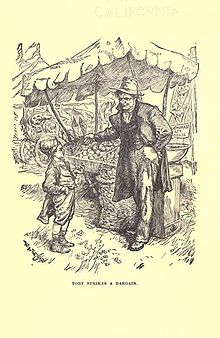
Toby Tyler is a "bad boy" novel, meant to teach a lesson about what happens to boys who do bad things; other examples include George W. Peck's Peck's Bad Boy (1883), Thomas Bailey Aldrich's The Story of a Bad Boy (1870), and Mark Twain's Adventures of Tom Sawyer (1876). [3] As with Mark Twain's Adventures of Huckleberry Finn (1884), also about a conscience-stricken escaped and wandering orphan boy (written following the success of Toby Tyler), [4] most readers don't remember Toby Tyler for its wholesome message, but as a romantic story of running away to the circus and adventures on the road. [3]
The book was influential with some famous "bad boys". A young Carl Sandburg thought Toby Tyler was one of his favorite books (even better than Adventures of Huckleberry Finn). [5] Harlan Ellison credits it as influencing his decision to run off with the circus. [6] William S. Burroughs wrote of it in his journals. [7]

Adventures of Huckleberry Finn is a novel by American author Mark Twain, which was first published in the United Kingdom in December 1884 and in the United States in February 1885.

Samuel Langhorne Clemens, known by the pen name Mark Twain, was an American writer, humorist, essayist, entrepreneur, publisher and lecturer. He was praised as the "greatest humorist the United States has produced", and William Faulkner called him "the father of American literature". His novels include The Adventures of Tom Sawyer (1876) and its sequel, Adventures of Huckleberry Finn (1884), with the latter often called the "Great American Novel". Twain also wrote A Connecticut Yankee in King Arthur's Court (1889) and Pudd'nhead Wilson (1894), and co-wrote The Gilded Age: A Tale of Today (1873) with Charles Dudley Warner.

Howard Roger Garis was an American author, best known for a series of books that featured the character of Uncle Wiggily Longears, an engaging elderly rabbit. Many of his books were illustrated by Lansing Campbell. Garis and his wife, Lilian Garis, were possibly the most prolific children's authors of the early 20th century.

Roughing It is a book of semi-autobiographical travel literature by Mark Twain. It was written in 1870–71 and published in 1872, as a prequel to his first travel book The Innocents Abroad (1869). Roughing It is dedicated to Twain's mining companion Calvin H. Higbie, later a civil engineer who died in 1914.
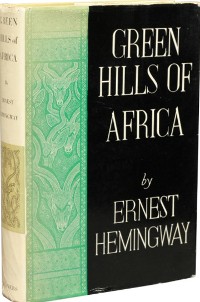
Green Hills of Africa is a 1935 work of nonfiction by American writer Ernest Hemingway. Hemingway's second work of nonfiction, Green Hills of Africa is an account of a month on safari he and his wife, Pauline Marie Pfeiffer, took in East Africa during December 1933. Green Hills of Africa is divided into four parts: "Pursuit and Conversation", "Pursuit Remembered", "Pursuit and Failure", and "Pursuit as Happiness", each of which plays a different role in the story.

George Wilbur Peck was an American writer and politician from Wisconsin. He served as the 17th governor of Wisconsin and the 9th mayor of Milwaukee.
Michael Patrick Hearn is an American literary scholar as well as a man of letters specializing in children's literature and its illustration. His works include The Annotated Wizard of Oz (1973/2000), The Annotated Christmas Carol (1977/2003), and The Annotated Huckleberry Finn (2001). He considers the three most quintessential American novels to be Moby-Dick by Herman Melville, The Wonderful Wizard of Oz by L. Frank Baum, and The Adventures of Huckleberry Finn by Mark Twain.
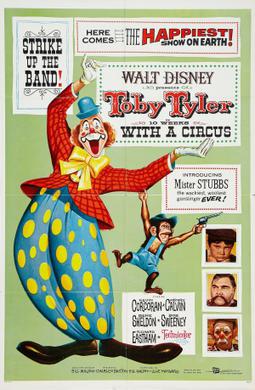
Toby Tyler or 10 Weeks with a Circus, also known simply as Toby Tyler, is a 1960 American drama film directed by Charles Barton and starring Kevin Corcoran, Henry Calvin, Gene Sheldon, and Richard Eastham. It was produced by Walt Disney Productions and distributed by Buena Vista Distribution Company on January 21, 1960. It is based on the 1880 children's book Toby Tyler; or, Ten Weeks with a Circus by James Otis Kaler.
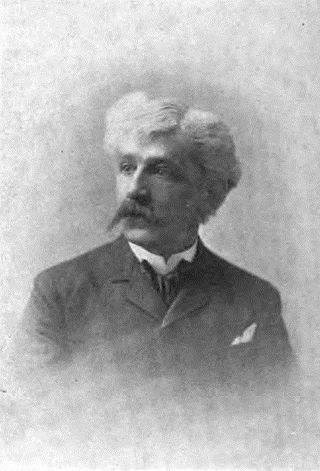
James Otis Kaler was an American journalist and author of children’s literature. He wrote under the name James Otis.

Lewis Sargent was an American film actor. He appeared in 80 films between 1917 and 1949.

James "Jim" is one of two major fictional characters in the classic 1884 novel Adventures of Huckleberry Finn by Mark Twain. The book chronicles his and Huckleberry's raft journey down the Mississippi River in the antebellum Southern United States. Jim, who is often referred to in the book as a "nigger," is a black man who is fleeing slavery; "Huck", a 13-year-old white boy, joins him in spite of his own conventional understanding and the law.
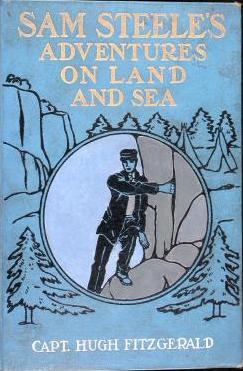
Sam Steele's Adventures on Land and Sea is a juvenile adventure novel written by L. Frank Baum, famous as the creator of the Land of Oz. The book was Baum's first effort at writing specifically for an audience of adolescent boys, a market he pursued in the coming years of his career. The novel was first published in 1906, under the pen name "Capt. Hugh Fitzgerald", one of Baum's pseudonyms.

Huckleberry "Huck" Finn is a fictional character created by Mark Twain who first appeared in the book The Adventures of Tom Sawyer (1876) and is the protagonist and narrator of its sequel, Adventures of Huckleberry Finn (1884). He is 12 to 13 years old during the former and a year older at the time of the latter. Huck also narrates Tom Sawyer Abroad and Tom Sawyer, Detective, two shorter sequels to the first two books.

Peck's Bad Boy with the Circus is a 1938 American comedy film directed by Edward F. Cline, based on the book of the same name by George W. Peck, one of his stories of Peck's Bad Boy.

Samuel Langhorne Clemens , well known by his pen name Mark Twain, was an American author and humorist. Twain is noted for his novels Adventures of Huckleberry Finn (1884), which has been called the "Great American Novel," and The Adventures of Tom Sawyer (1876). He also wrote poetry, short stories, essays, and non-fiction. His big break was "The Celebrated Jumping Frog of Calaveras County" (1867).
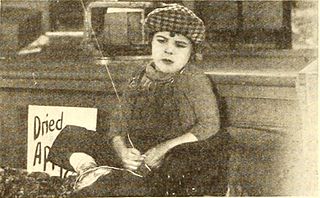
Henry "Hennery" Peck, popularly known as Peck's Bad Boy, is a fictional character created by George Wilbur Peck (1840–1916). First appearing in the 1883 novel Peck's Bad Boy and His Pa, the Bad Boy has appeared in numerous print, stage, and film adaptations. The character is portrayed as a mischievous prankster, and the phrase "Peck's bad boy" has entered the language to refer to anyone whose mischievous or bad behavior leads to annoyance or embarrassment. Described as "a vicious little swaggerer" and "no more than a callous brute", Hennery's antics were more mean-spirited than those of earlier boyhood characters like Huckleberry Finn, and modern criticism views the violence and racism in the original stories as objectionable or politically incorrect. The inspiration for Hennery—the Bad Boy—came from Edward James Watson, who was a telegraph messenger boy that Peck met in the early 1880s. Apparently Watson thought up many of the stories used by Peck. Mr Watson had in his possession a letter from Peck "To my friend E. J. Watson, who, as a boy, gave me the first idea that culminated in the Peck's Bad Boy Series".
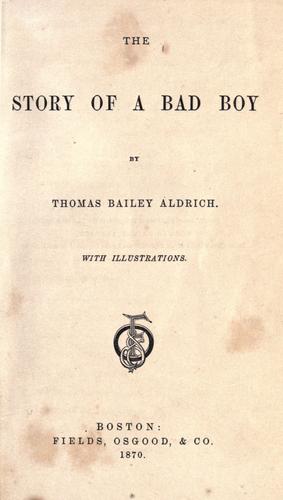
The Story of a Bad Boy (1870) is a semi-autobiographical novel by American writer Thomas Bailey Aldrich, fictionalizing his experiences as a boy in Portsmouth, New Hampshire. The book is considered the first in the "bad boy" genre of literature, though the text's opening lines admit that he was "not such a very bad, but a pretty bad boy".

The Adventures of Tom Sawyer is an 1876 novel by Mark Twain about a boy growing up along the Mississippi River. It is set in the 1840s in the town of St. Petersburg, which is based on Hannibal, Missouri, where Twain lived as a boy. In the novel, Tom Sawyer has several adventures, often with his friend Huckleberry Finn. Originally a commercial failure, the book ended up being the best selling of Twain's works during his lifetime. Though overshadowed by its 1884 sequel, Adventures of Huckleberry Finn, the book is considered by many to be a masterpiece of American literature. It is alleged by Mark Twain to be one of the first novels to be written on a typewriter.
Truman W. "True" Williams was an American artist known as the most prolific illustrator to Mark Twain's books and novels. He illustrated the first edition of The Adventures of Tom Sawyer (1876) and was thus the first to visually portray such characters as Tom Sawyer and Huckleberry Finn. He was also sole illustrator of Twain's Sketches, New and Old and primary illustrator of Roughing It and The Innocents Abroad. Working with a number of publishers he also illustrated works by writers Bill Nye, George W. Peck, Joaquin Miller, and others. He was also a notorious drunk, which slowed his work and made him unreliable.
Rascals and Robbers: The Secret Adventures of Tom Sawyer and Huckleberry Finn is a 1982 American made-for-television adventure film originally broadcast February 27, 1982 on CBS as the TV Movie of the Week. CBS financed the film with a $2.2 million budget and the working title was The Further Adventures of Tom Sawyer and Huckleberry Finn. The film was shot on location in Natchez, Mississippi in the fall of 1981 where the filmmakers added dirt to the street of the historic town. The movie features early roles for Cynthia Nixon and Anthony Michael Hall. It was the first major role for then-child actor and future award-winning filmmaker Patrick Creadon, who starred as Tom. The teleplay was written by Carlos Davis and David Taylor. It was directed by Dick Lowry and produced by his brother Hunt Lowry.
In 1877 he wrote Toby Tyler as a serial in Harper's Young People and then devoted himself to books for children, notably the "Minute-Boy Series", writing nearly 150 volumes, including serials..